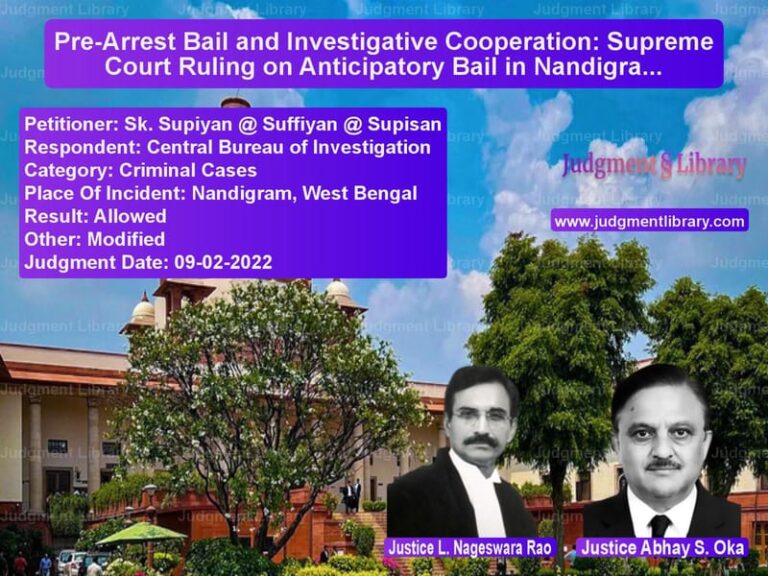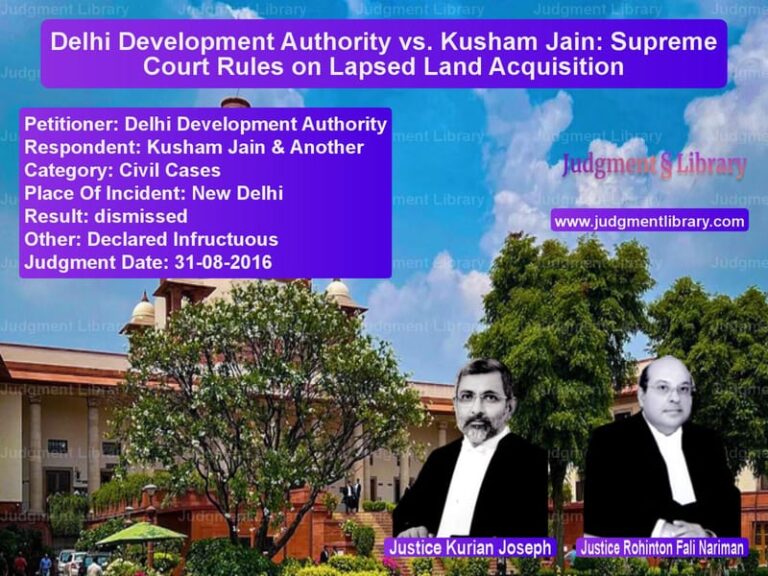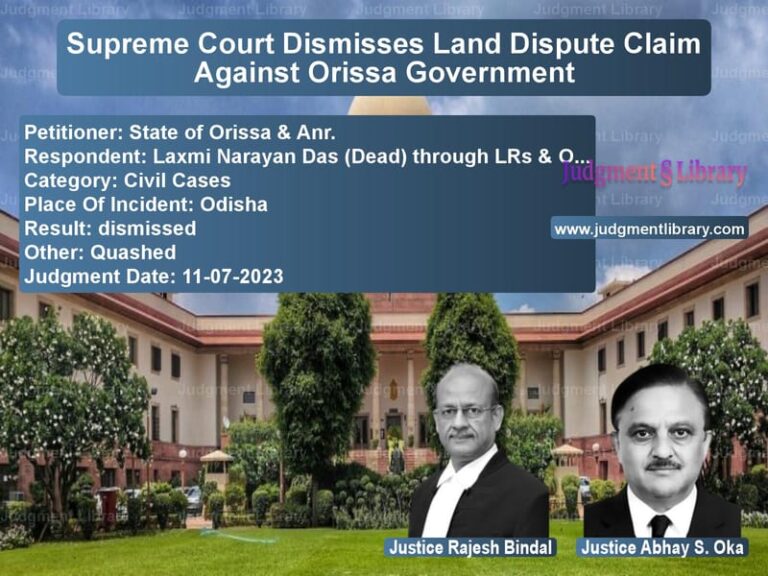Supreme Court Reduces Sentence in Attempt to Murder Case Citing Age of Accused
The case of Dinesh Yadav vs. State of Jharkhand is a significant judgment by the Supreme Court of India concerning attempt to murder under Section 307 IPC. The Court modified the conviction and sentence of the accused, reducing the punishment while emphasizing the importance of proportional sentencing.
Background of the Case
The case arose from an altercation on March 27, 1995, in Jharkhand. The prosecution alleged that during a dispute over land, the appellant Dinesh Yadav and his co-accused Deven Yadav and Badri Yadav attacked the informant with deadly weapons.
Key events in the case:
- The altercation occurred when the accused were planting chili crops near the informant’s house.
- The informant objected, leading to an altercation.
- Co-accused Badri Yadav (since deceased) allegedly struck the informant with a lathi.
- The appellant Dinesh Yadav allegedly attacked the informant with a gandasa, causing a compound fracture in his forearm.
- The case was registered under Section 307 IPC for attempt to murder.
Trial Court’s Findings
The trial court convicted Dinesh Yadav and Deven Yadav under Section 307 IPC read with Section 34 IPC and sentenced them to five years of rigorous imprisonment along with a fine of Rs. 1,000 each.
High Court’s Ruling
The accused challenged their conviction before the Jharkhand High Court.
- The High Court acquitted co-accused Deven Yadav but upheld the conviction of Dinesh Yadav.
- Since the State did not challenge Deven Yadav’s acquittal, the judgment in his favor attained finality.
Aggrieved, Dinesh Yadav approached the Supreme Court.
Arguments by the Appellant (Dinesh Yadav)
The appellant’s counsel argued:
- There were major inconsistencies in the evidence of prosecution witnesses.
- The informant was not examined during the trial.
- The investigating officer was also not examined, which should lead to the benefit of doubt.
- Since co-accused Deven Yadav was acquitted, Dinesh Yadav should also be given similar relief.
Arguments by the Respondent (State of Jharkhand)
The State countered:
- The conviction was based on eyewitness accounts and medical evidence.
- Witnesses PW-1 and PW-4 consistently testified that Dinesh Yadav attacked the informant with a gandasa.
- The medical report confirmed a compound fracture on the forearm.
- The non-examination of the investigating officer did not weaken the case, as the material evidence remained intact.
Supreme Court’s Observations
The Supreme Court analyzed the evidence and made the following observations:
- Eyewitnesses PW-1 and PW-4 consistently identified Dinesh Yadav as the assailant.
- Medical evidence corroborated the injuries caused by a sharp weapon.
- The absence of the investigating officer’s testimony did not significantly impact the case.
However, regarding the nature of the offense, the Court stated:
“The accused-appellant did not make any attempt to commit murder of the informant. The incident took place on the spur of the moment due to a dispute over land.”
Based on this, the Court held that the offense fell under Section 326 IPC (grievous hurt with a dangerous weapon) instead of Section 307 IPC (attempt to murder).
Final Judgment
On March 9, 2017, the Supreme Court ruled:
- The conviction under Section 307 IPC was set aside.
- Dinesh Yadav was convicted under Section 326 IPC.
- The sentence was reduced to one year of simple imprisonment.
- The appellant was ordered to pay a fine of Rs. 50,000, out of which Rs. 45,000 would be given to the informant’s legal representatives.
- The appellant was required to surrender within four weeks to serve the remaining sentence.
Legal Implications of the Judgment
This ruling establishes key principles:
- Proportional Sentencing: Courts must ensure that the punishment fits the crime.
- Intent in Attempt to Murder Cases: The intent to kill must be explicitly proven for a conviction under Section 307 IPC.
- Judicial Leniency: Consideration of the accused’s age (72 years) played a role in reducing the sentence.
Impact on Future Criminal Cases
This judgment sets an important precedent:
- Courts will carefully examine whether an assault was meant to cause death.
- Mitigating factors, such as age and circumstances of the altercation, may lead to reduced sentences.
- Sentencing under Section 307 IPC requires strong evidence of intent to kill.
Conclusion
The Supreme Court’s decision in Dinesh Yadav vs. State of Jharkhand reinforces the principle that courts must differentiate between grievous hurt and attempted murder. The ruling ensures that punishments remain fair and proportional to the severity of the offense.
Don’t miss out on the full details! Download the complete judgment in PDF format below and gain valuable insights instantly!
Download Judgment: Dinesh Yadav vs State of Jharkhand Supreme Court of India Judgment Dated 09-03-2017.pdf
Direct Downlaod Judgment: Direct downlaod this Judgment
See all petitions in Bail and Anticipatory Bail
See all petitions in Attempt to Murder Cases
See all petitions in Fraud and Forgery
See all petitions in Judgment by Dipak Misra
See all petitions in Judgment by Mohan M. Shantanagoudar
See all petitions in partially allowed
See all petitions in Modified
See all petitions in supreme court of India judgments March 2017
See all petitions in 2017 judgments
See all posts in Criminal Cases Category
See all allowed petitions in Criminal Cases Category
See all Dismissed petitions in Criminal Cases Category
See all partially allowed petitions in Criminal Cases Category







